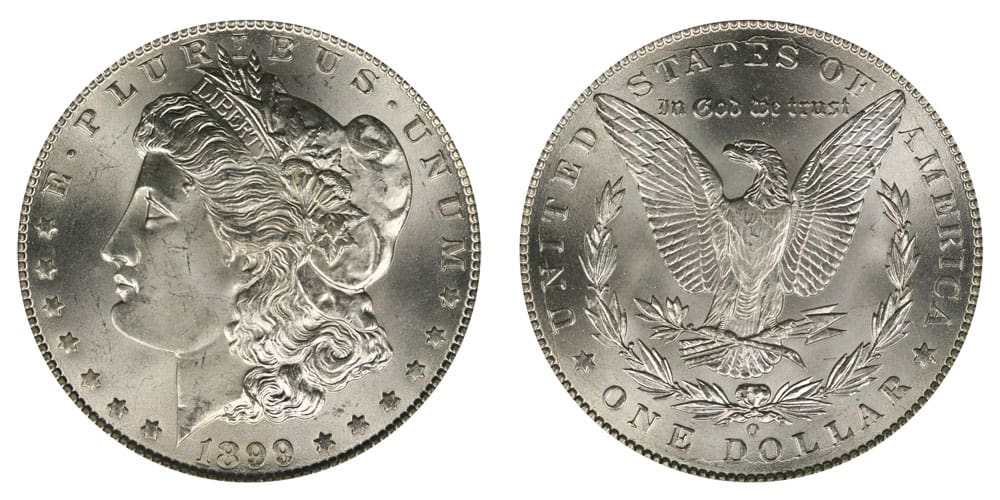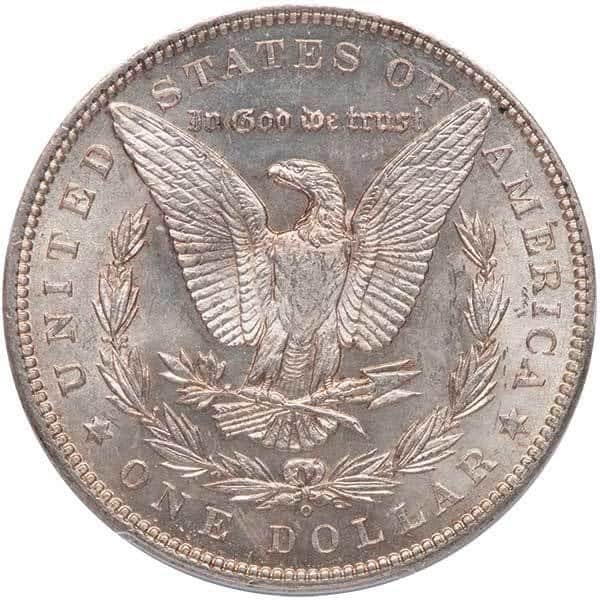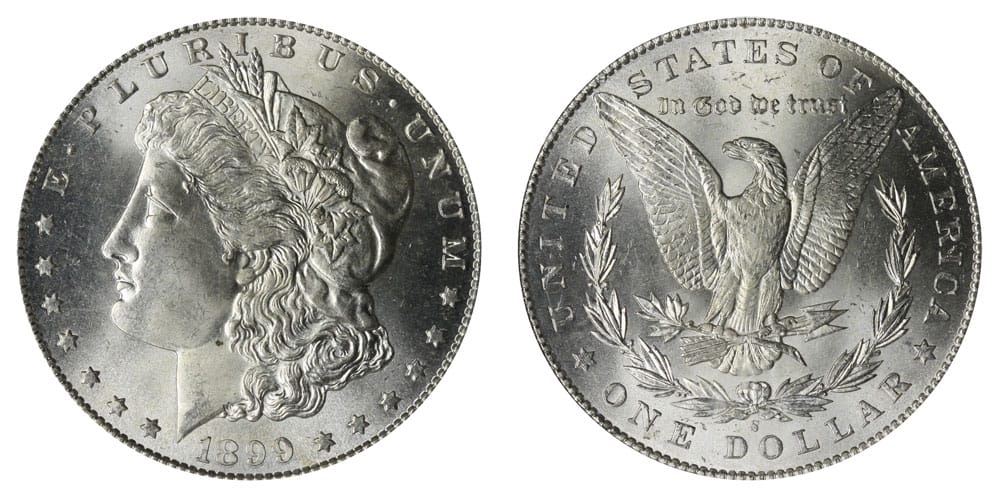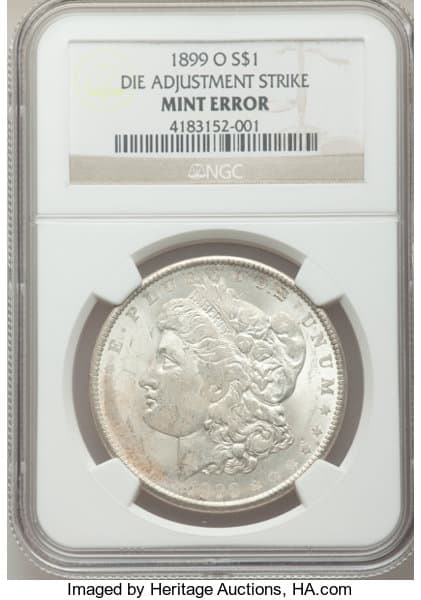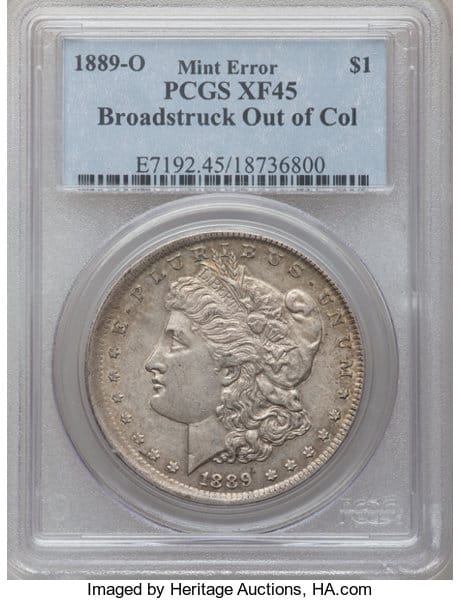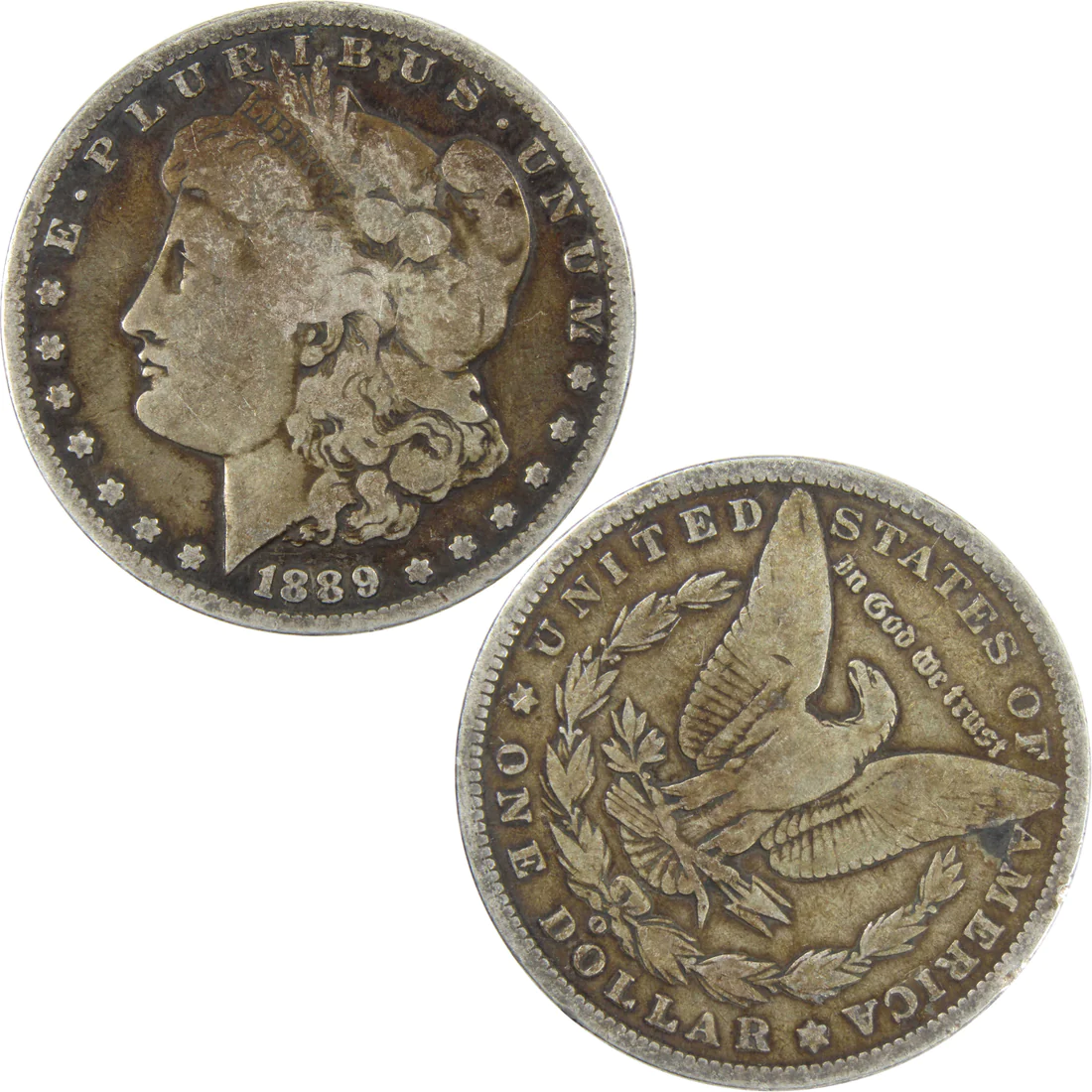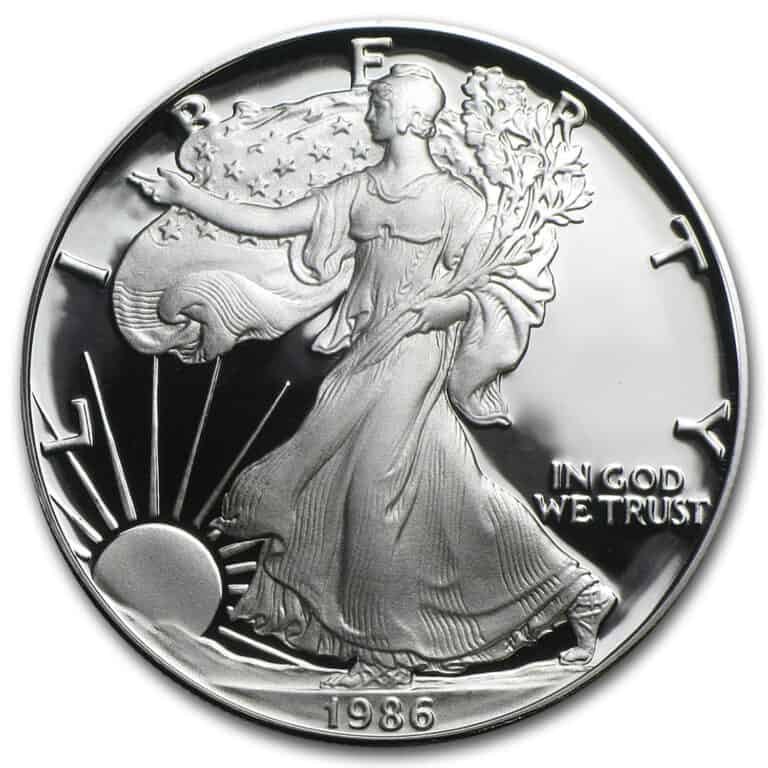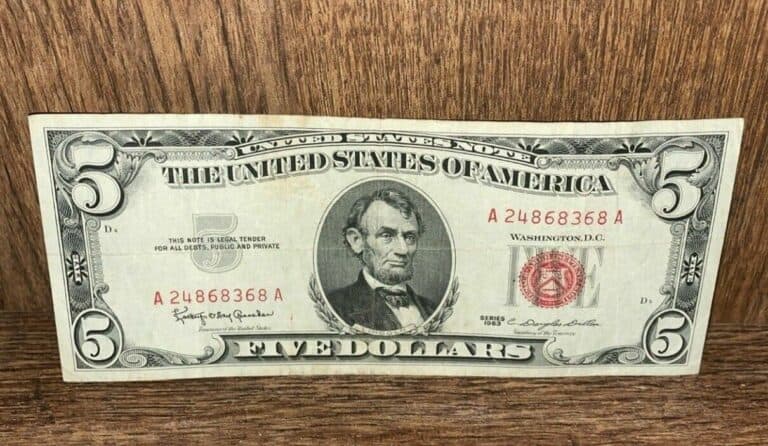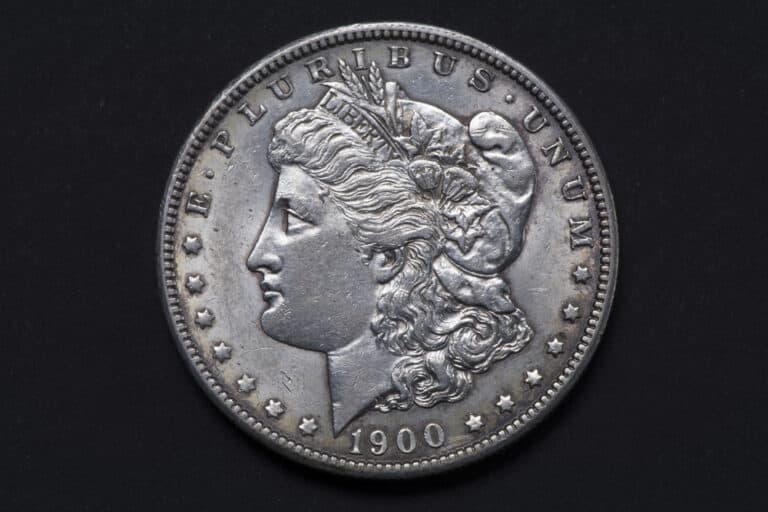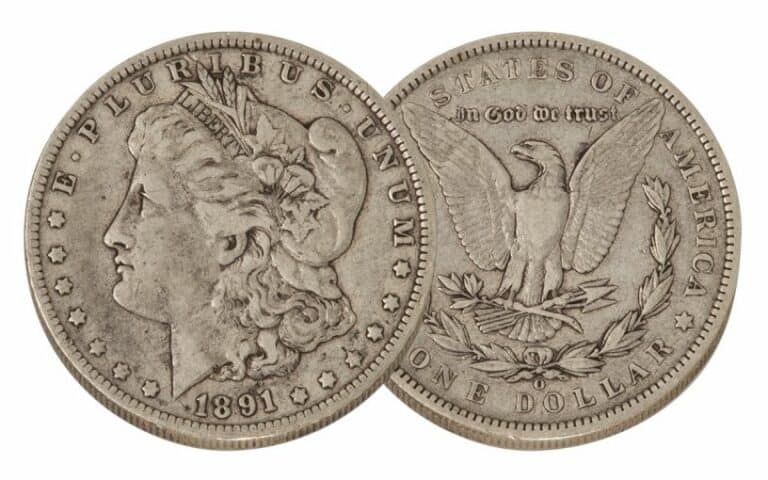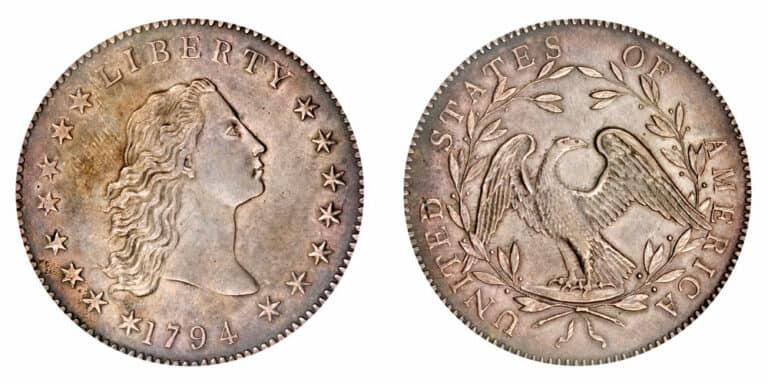1899 Silver Dollar Value: How Much Is It Worth Today?
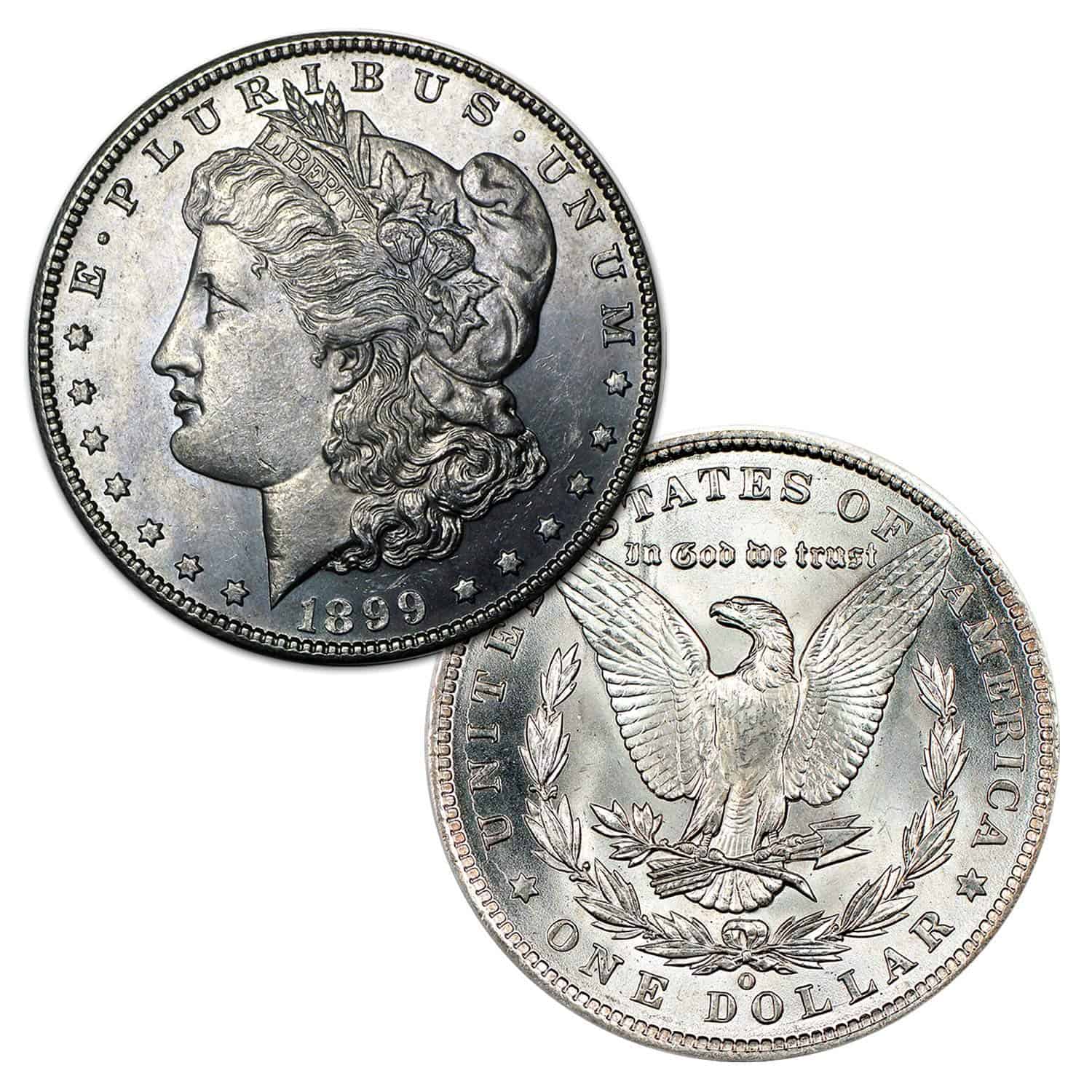
Although dollar coins have long since ceased production, their popularity has always remained high among collectors.
Arguably the most popular dollar coin series is the Morgan silver dollar, hailed as a beautifully designed coin and sought after for its high silver composition.
The 1899 silver dollar is a treasured find, as its lower-than-average production numbers make them a scarce commodity at auction.
This article will examine the potential of the 1899 silver dollar value. We’ll explore the different varieties of coins in circulation, their rich history in America, and most importantly, what price your coin might fetch at auction!
1889 Silver Dollar Value Chart |
||||
| Mint Mark | Good
(G-4) |
Extremely Fine | Uncirculated
(MS-65) |
Uncirculated
(MS-67)
|
| 1899 No Mint Silver Dollar | $159 | $216 | Up to $1,200 | Up to $21,150 |
| 1899 O Silver Dollar | $42 | $60 | Up to $408 | Up to $29,900 |
| 1899 Micro O Silver Dollar | $50 | Up to $200 | Up to $32,900 | Up to $73,438 |
| 1899 S Silver Dollar | $54 | $103 | Up to $5,075 | Up to $49,937 |
1899 No Mint Silver Dollar
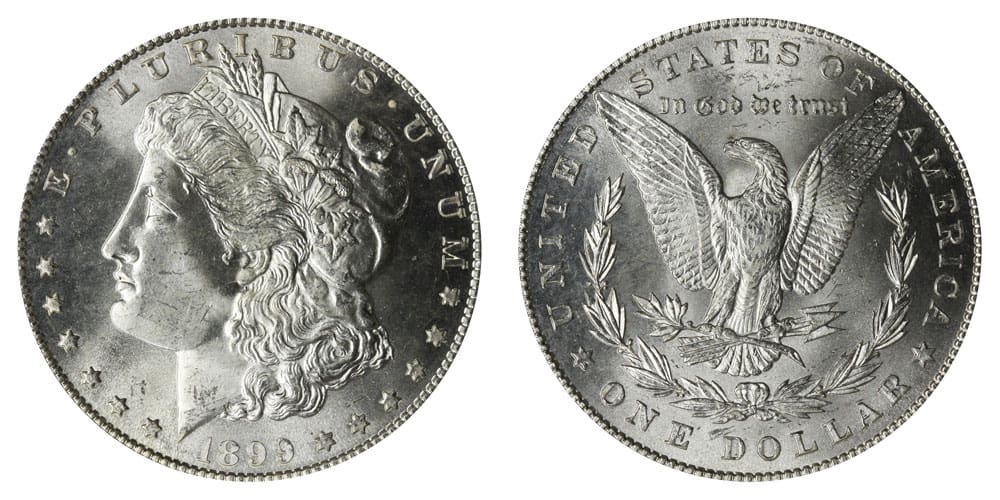
The first variety we will discuss is the 1899 no mint silver dollar, made in Philadelphia. As the name suggests, they have no mint mark on the coin’s reverse side, making them quite easy to identify.
Typically, the mint in Philadelphia made the most coins in each issue, but the 1899 silver dollar is an exception. The mint only struck 330,846 silver dollars this year, making them one of the rarest varieties by today’s standards.
This incredibly low production number makes 1899 no mint silver dollar one of the rarest coins to find in any condition. The coin can easily fetch hundreds of dollars even in poor, good, or fine conditions.
As the name suggests, the 1899 no mint silver dollar was made of 90% fine silver and 10% copper. The Bland-Allison Act of 1878 heavily influenced this composition, as the US Treasury was obligated to use silver in coin production.
As such, the silver dollar has a much higher melt value of $18.84 than its face value of one dollar. This makes the 1899 silver dollar a great investment for any collector, irrespective of the coin’s condition.
Both the coin’s obverse and reverse were designed by English-born engraver George T. Morgan, after whom the series is named. The coin’s obverse depicts Liberty, a common symbol of American ideals of freedom and independence. It features the Latin motto ‘E Pluribus Unum’, a common phrase in many US coins.
The reverse of the 1899 silver dollar depicts an eagle with its wings spread out, clutching arrows and an olive branch. It symbolizes America’s readiness for battle but ultimate ambition for peace. ‘In God, We Trust’ is above the eagle’s head.
Because of its expensive composition, the US Treasury was keen to stop counterfeits of the 1899 silver dollar. The coin has reeded edges, which prevented people from taking silver filings off coins from being used in producing replicas. Additionally, the coin had an exact weight of 26.73 grams and a diameter of 38.1 mm, which was hard to replicate.
Unfortunately, despite numerous attempts by the US Mint, silver dollars were never that popular among the US population. Many were unhappy that a high-value coin could be lost so easily, and the Morgan silver dollar coin was discontinued by 1904, to the surprise of no one.
While unpopular as coins, silver dollars are incredibly popular as collectibles. An average 1899 no mint silver dollar can fetch between $159 to $216, even in its lowest condition.
But the coin’s true potential is found in higher mint states, where it becomes almost one-of-a-kind. MS65 1899 silver dollars have gone under the hammer for a few thousand dollars in the past. The highest recorded sale was in 2015 when this 1899 no mint silver dollar sold for $21,150, with a sharp strike, strong luster, and creamy white colors.
1899 O Silver Dollar
The New Orleans mint easily produced the most silver dollars in 1899, at an impressive 12,290,000. This makes the coin one of the most common to find in circulation.
You can identify these coins by the ‘O’ mint mark on the reverse side. Like other coins in the Morgan dollar series, it is made primarily of 90% silver and 10% copper.
Many collectors enjoy collecting coins made in New Orleans because of the mint’s rich history. As a southern mint, it was set up in 1835 to help boost coin production and limit the circulation of foreign tender but faced much turbulence throughout the American Civil War.
The mint closed permanently in 1909, and most of its machinery went to Philadelphia. That makes the 1899 O silver dollar among the last issued coins minted there.
Because of the high production numbers, especially compared to Philadelphia and San Francisco, the 1899 O silver dollar has the lowest average prices in good or fine condition. You can expect coins of these low grades to fetch between $40 to $60 at auction.
At high mint state, the 1899 O silver dollar can fetch thousands. One such coin sold for $29,900 in 2009, with a recorded mint state of MS68. The listing states the coin had a “fully brilliant surface” and strong original luster.
1899 Micro O Silver Dollar Error
The Micro O mint mark is one of the most interesting errors from 1899 silver dollars. As the letter suggests, these coins were also made in New Orleans.
You can identify these coins by the smaller-than-expected ‘O’ mint mark on the reverse side. A potential explanation for this error, and its prevalence in today’s market, is that the mint mark used was the stamps meant for the Quarter Dollar were used by accident.
Since no official records of this variety exist, we can only assume they form part of the 12,290,000 coins produced in New Orleans.
Auction site PCGS reports increasing demand for these coins, as only some survive in high mint state conditions. Average or fine-conditioned coins can still fetch between $300-900. But in higher mint states, the coin commands a high premium. In MS64, for example, the 1899 micro o silver dollar can sell for up to $32,900.
The highest recorded sale for a coin of this kind was set in 2015 when an 1899 Micro O silver dollar record sold for an unprecedented $73,438. The listing described the coin s one of the most desirable Morgan dollars ever made, with booming luster and fully struck details.
1889 S Silver Dollar
The San Francisco mint produced the last variation of the 1899 silver dollar coin. You can easily identify these coins by the signature ‘S’ mint mark on the coin’s reverse.
San Francisco only produced 2,562,000 silver dollars, and in normal circumstances, this would make them incredibly difficult to find and highly valuable. But per PCGS’s estimations, several high-profile sales from coin hoards in the 1940s and 1950s (like the Redfield hoard) have seen an influx of high-mint state coins entering circulation.
As such, the 1889 S silver dollar has a closer value to its other, more common varieties. That said, the coin can still be quite valuable, especially if it shows no signs of coming from a hoard sale (i.e., bag marks or damage from other coins).
In good or fine condition, you can expect the coins to sell for between $50 and 100. But the coin’s true potential is seen at a higher condition. This 1889 S silver dollar with an MS66+ sold for over $5,075 and was described as a pleasant sheen and no signs of “bag marks.”
The highest sale on record was set in 2015 when an 1899 S silver dollar went under the hammer for $49,937. The listing described the coin as being remarkably clean and smooth, and despite one or two frost breaks, it remains one of the best-conditioned silver dollars from that year.
1899 silver dollar Grading
As a US coin, the most common system used to grade Morgan dollars is the Sheldon coin grading system. It is a 70-point scale that classifies coins based on their condition, sheen, luster, and strike.
Rare 1899 Silver Dollar Error List
Despite what you might initially think, errors can increase a coin’s value in the eyes of collectors. That’s because these faults can make the coin a one-of-a-kind treasure.
Below is a list of the most commonly found 1899 silver dollar errors:
1889 Silver Dollar Die Adjustment error
Because of its high silver content, more quality controls were in place to ensure each coin struck was high quality. One common error, though, that persists in the coin is an adjustment error.
Several test coins ensured everything was aligned properly after every new die. These coins may have entered circulation with mistakes or faults present in their designs. The value of an adjustment strike ultimately relies on the appearance of the coin and its overall condition.
This 1899 O silver dollar sold for a premium of $734 in 2014 and is advertised as a “test coin.” The border and stars of the obverse are feint, flat, and in some parts, missing altogether.
1889 Silver Dollar off-center error
As the name suggests, an off-center error is when the coin’s design is angled or even missing from the coin entirely. It results from the coin and stamp being out of alignment.
Collectors measure off-center errors in percentages, with higher rates usually fetching higher prices at auction. Though frequently found across all coin types, this error isn’t common with the 1899 silver dollar because of the higher standards set on silver-based coins.
That said, past auctions have shown that the value can exceed into the thousands; this 1899 no mint silver dollar had a 7% off-center error and sold for $1,230 back in 2015, an
1899 Silver Dollar Broadstruck error
Collars ensured that coins always had the correct shape, weight, and thickness. Sometimes, these collars came off, broke, or became misshapen, resulting in a broadstruck error.
Broadstruck errors can vary depending on the coins, and while they aren’t the most valuable error found in the 1899 silver dollar, they can still surprise you. This 1899 O silver dollar sold for $763 in 2012, with missing outer collars noticeable on both the coin’s obverse and revere sides.
1889 Silver Dollar with Rotated Die Error
Another rare error in 1889 silver dollars is a rotated die error. This is essentially when the obverse and reverse designs of the coin do not match up, with one deviating from its position. In extreme cases, they may be flipped upside down.
This 1899 O silver dollar features a rotated die error, where neither side of the coin matches up, currently valued at $99.
1889 silver dollar FAQ
Is the 1899 silver dollar rare?
Like many other issues of the Morgan silver dollar, the 1899 silver dollar is considered quite rare in today’s market.
This is a result of many different reasons, including the pre-1900 production date, the high silver composition, and the scarce amount of coins in circulation today.
That said, several public auctions that contained hoarded 1899 silver dollars have diminished their uniqueness somewhat.
Where is the mint mark on an 1899 silver dollar?
The mint mark of an 1899 silver dollar is located on the coin’s reverse side, below the eagle and olive design, and just above the text ‘One Dollar.’ There are two mint marks you can identify – O suggests New Orleans, while S suggests San Francisco.
What is the 1899 silver dollar made from?
Like other Morgan dollar coins, the 1889 silver dollar contained a high amount of silver, at 90%, and the remaining 10% was made of copper. This made the coin expensive to produce.
Where did the name “Morgan dollar” come from?
The 1899 silver dollar belongs to a series of coins nicknamed ‘Morgan dollars’, named after the original designer, George T. Morgan.
What is the highest recorded sale for an 1899 silver dollar?
The highest-valued coin thus far is this 1899 Micro O silver dollar coin, which sold for $73,438. It had the famous micro mint mark error, which added significant value to its already high mint state.
